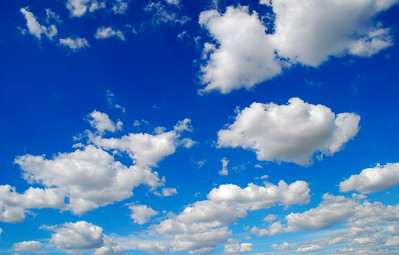If you look from the earth up into the sky, it
appears to be blue when there is good weather. But have you ever wondered why
that is actually the case?
To understand
why the sky is blue, you have to know first, that the entire earth is
surrounded by an atmosphere. This atmosphere ensures that we can breathe,
protects us from dangerous UV and X-rays from space and, thanks to a greenhouse
effect, the atmosphere provides pleasant temperatures on earth.
Our atmosphere consists mainly of nitrogen (75%) and oxygen (23%) but there are also various other gases and molecules such as hydrogen, carbon dioxide or helium.
In addition to the atmosphere, there is another important factor that determines the color of our sky. The structure of the sunlight. The light we see actually consists of all the colors we know. Together they appear white. However, it is possible to filter out individual colors from normal white light.
The energy emitted by the sun (including light) moves (like energy in the ocean) in the form of waves, with the individual colors being emitted in different wavelengths. For example, red light has a different wavelength than blue or yellow light or UV radiation. The differences between these wavelengths are minimal (only a few millionths of a meter), but can still be perceived by our eyes.
If the white light that we know now hits the earth’s atmosphere, the different wavelengths are refracted to different degrees by the gases and molecules in the atmosphere. Most of the red, green and yellow light (which mixed together still looks white) goes straight into our eyes without breaking. However, the blue light is exactly the right size to break on the molecules and gases it won’t fall directly into our eye, but rather stay longer in the upper atmosphere. There it can be seen by everyone for a long period of time, which is finally the reason why the sky is blue.
– by Simon
Picture source: “https://www.flickr.com/photos/8525214@N06/6055469523/”
Text sources: “https://scijinks.gov/blue-sky/”
“https://wiki.bildungsserver.de/klimawandel/index.php/Aufbau_der_Atmosph%C3%A4re”

